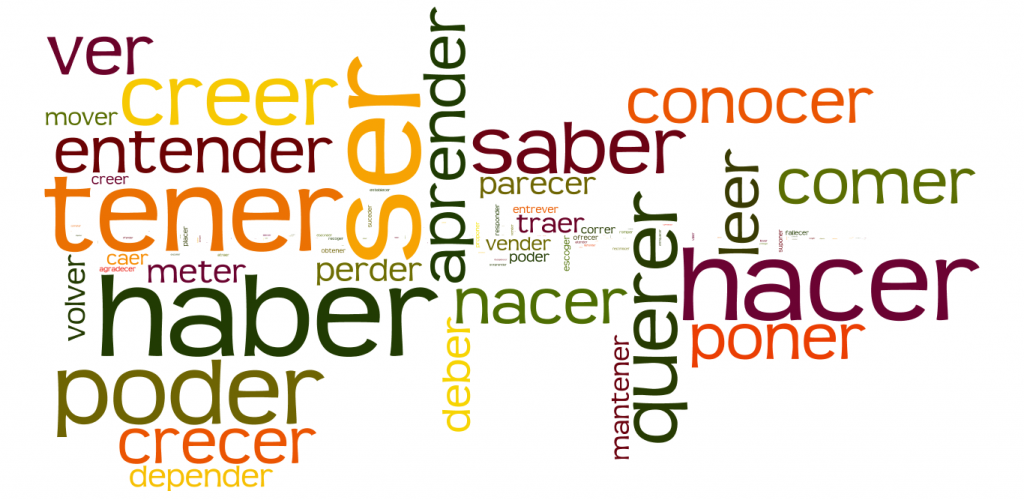| comer to eat | |
| yo como | nosotros/as comemos |
| tú comes | |
| él/ella/usted come | ellos/as/ustedes comen |
| past participle : comido | |
Verbs with infinitives ending in -er form a second group of regular verbs in Spanish, often called second conjugation verbs. To conjugate these verbs in the present tense, drop the -er from the infinitive and add the second conjugation present tense endings: -o, -es, -e, -emos, -en. The following example show the -er verb aprender conjugated in the present tense.
Uno aprende a ser padre o madre, mientras uno va caminando.One learns to be a dad or mom while one goes.
